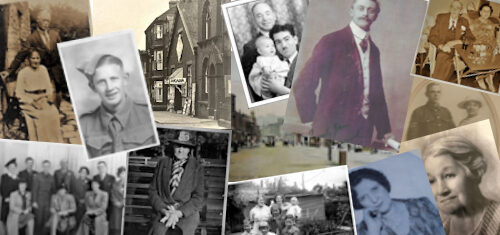Rochdale is a town in Greater Manchester, England, at the foothills of the South Pennines on the River Roch, about 10 miles (16 km) northeast of Manchester. It is the administrative centre of the Metropolitan Borough of Rochdale, which had a population of 211,699 in 2011, though Rochdale town was nearer to 92,000.
In the 19th century its status as a market town meant that Rochdale became a trading centre for the predominantly rural population that lived on the surrounding moorlands. The introduction of sheep into the local agricultural economy started a woollen industry founded on farm-based hand spinning and weaving. The trading of wool and cloth took place in public houses throughout the town on market days. Local weavers produced a range of woollen cloth including: kerseys, “a coarse woollen cloth of light weight and often ribbed”; baizes, “a coarse woollen stuff of plain colour with a nap on one side, used for table covers”; and most importantly, flannel, “a soft loosely woven cloth”. Most of the cloth woven in the Parish of Rochdale went for export to Europe and the Americas. If Manchester can be hailed as the place where “Cotton was King”, then Rochdale was the place where “Flannel was King”. Cotton didn’t become the dominant textile in Rochdale until 1830. The change from a hand-operated cottage-based industry to a machine-operated factory-based industry brought great wealth and a lot of misery to the area. The first textile mills used water-power and in some cases were converted corn mills located by the rivers that rushed down off the surrounding hills. The first chimney went up in Rochdale on Hanging Road in 1791 and heralded a change to steam power. It was soon joined by many others and the pollution of the air was only surpassed by the squalor in which the growing population lived.
As the farmer-weavers upped stakes and moved into town, to take advantage of the opportunities for trade weavers, cottages appeared around Rochdale. Master weavers built these three storey buildings with a characteristic array of windows on the top floor. The windows provided the light required by journeymen weavers, employed on a piecework basis, who operated the looms located on the top floor. The move into town saw Rochdale grow from 14,000 in 1801 to 23,000 by 1821. The industrialization of the textile industry led first to the concentration of formerly rural people into Rochdale. The population exploded and by 1841 there were 68,000 people in a town that just 20 years earlier had 23,000. Living conditions in the overcrowded, squalid and increasingly polluted town were dreadful. As mechanization increased and prices for cloth fluctuated, the wages paid to factory workers and the prices paid to independent handweavers spiralled ever downwards. The population of Rochdale according to the census was 71,401 in 1891.

The Rochdale Pioneers opened the first Cooperative shop in Toad Lane in 1844. This was the birth of the Cooperative movement that we know today.
For a street map of Rochdale in 1890 – 91 use the following link: ‘Reproduced with the permission of the National Library of Scotland’
For more information on Rochdale please use the following links:
